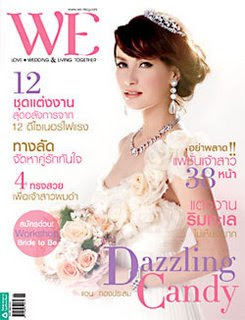
Phu Hin Rong Kla National Park has an area of 307 square kilometers (191,875 rai). It lies in Dansai District of Loei Province and Nakorn Thai District of Phitsanuloke Province. Phu Hin Rong Kla is blessed with natural beauty and historical significance. Unfortunately, fighting there during the communist years did untold damage to the forest. The geology, landscape and natural beauty of the park was recognized and protected after the communist insurgents left.
CLIMATE: Phu Hin Rong Kla's climate is similar to that of Phu Kra Dung and Phu Luang. Because of its high altitude, the park is cool all year round, especially, of course, in the cool season, when temperatures can occasionally drop to freezing point. Mist can cover the whole area at times. In the hot season, conditions are cool and pleasant; the temperature does not rise much above 25 Celcius.
POINTS OF NATURAL BEAUTY: Lan Hin Tak: 300 meters to the west of the Thai army headquarters (Than Pacharin) is Lan Hin Tak (Broken Rock Field). Along the path, growing in rock crevices are various plant species, including mosses, ferns and ground orchids. The crevices, arranged in rough rows, seem to have come from the earth splitting. Peering into their depths can be eerie. Some crevices are narrow enough to jump across; other are wider. From several can be heard loud echoing of running water. The crevices were perhaps important to the communists, as they could have been used for hiding.
Lan Hin Pum: About four kilometers from the park headquarters, near the cliffs, is a field of modulated stone. Whose lumps are roughly equal in size. It is believed that this formation resulted from physical and chemical erosion. Patients from the hospital suffering from fever would used the area as a rest spot, as a cool breeze blows over the area almost continuously.
Flag-pole Cliff: As steep cliff overlooking a magnificent view of the valley to the west. The communists used this cliff to fly their red flag after each victory over the government forces.
Romglao and Paradon Waterfalls: Romglao Waterfall is about five kilometers from park headquarters. As you approach the road to the School of Military Politics, the path to the waterfall is on the left and leads about one kilometer off the road to the waterfall. The forest in this area s in good condition, with many large trees. A side trail leads to Paradon Waterfall, which is downstream of Romglao Waterfall.
Sripacharin Waterfall: This medium-sized waterfall is about 600 meters off the road, near Huay Namsai Village. The trail leads past some fields of Hmong villagers and into a small valley. It then runs with a stream about 150 meters until reaching the falls. Sripacharin Waterfall is the most accessible waterfall in the park.
Ganglad and Tadfa Waterfalls: Set at the foot of Phu Hin Rong Kla, Ganglad is about two kilometers from Huay Namsai. At the base of the falls is a small hydro-electric generator. If you climb three or four kilometers further up the mountain, you will reach Tadfa Waterfall (also known as Tan Gawsahng Waterfall), an impressive, towering waterfall.
In addition to these spots there are many others to visit, including Lan Anekprasong, Ganghannam and Pratuwua (Sappanmarana)
GETTING THERE: From Phitsanuloke, take a public bus 68 kilometers towards Lomsak. At Ban Yang, take a left and travel 29 kilometers to Nakorn Thai District. From Nakorn Thai, take a song-taew the remaining 28 kilometers to the park.













































